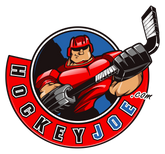Learning to skate and stick handle with their head up is critical for young hockey players because it helps them to develop better situational awareness on the ice, make better decisions, and avoid injuries.
When a player is skating with their head down, they are unable to see what is happening around them, including other players, the puck, and potential hazards on the ice. This makes it more difficult for them to anticipate and react to what is happening in the game, which can lead to missed opportunities or costly mistakes.
On the other hand, when a player skates with their head up, they can see everything that is happening on the ice, allowing them to make better decisions and react more quickly. This increased situational awareness can help players to anticipate the movements of other players, identify open passing lanes, and make better plays both on and off the puck.
In addition to improving their overall performance, learning to skate and stick handle with their head up can also help to prevent injuries. When a player is skating with their head down, they are more likely to collide with other players or obstacles on the ice, which can lead to serious injuries such as concussions. By keeping their head up and staying aware of their surroundings, players can avoid these types of collisions and stay safe while playing the game.
Overall, learning to skate and stick handle with their head up is crucial for young hockey players who want to improve their skills and stay safe on the ice. Coaches and parents should encourage players to keep their heads up and practice situational awareness from an early age, so that they can develop good habits and build a strong foundation for success in the sport.



